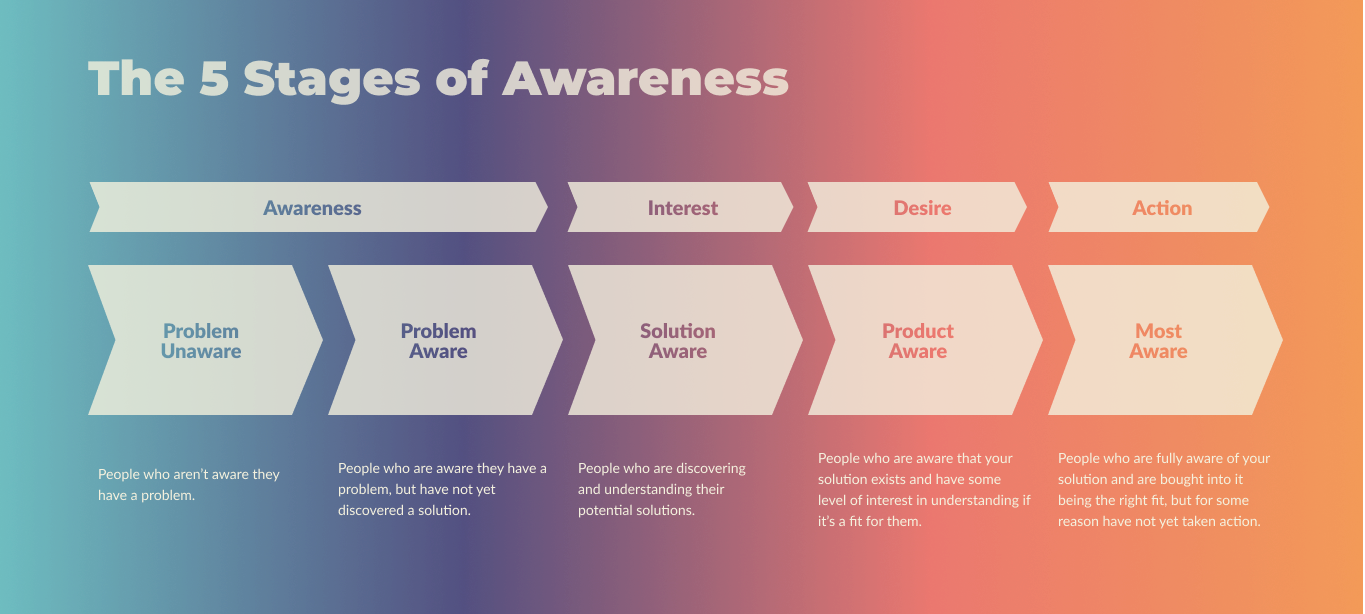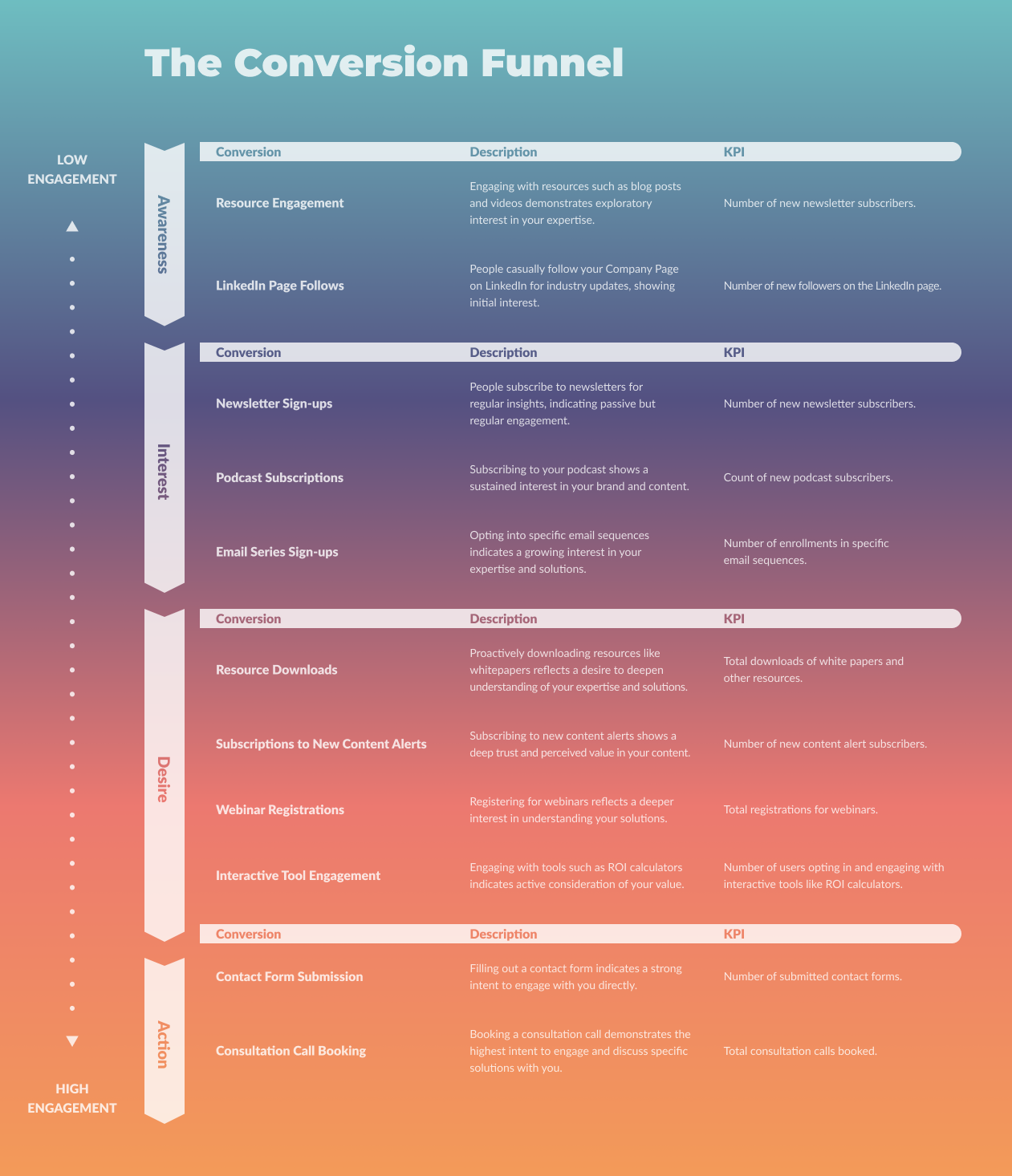Beyond the Click: Rethinking Conversions in B2B Marketing
“Our marketing isn’t driving any leads.”
“The only leads we’re getting are spammy or unqualified.”
“We have no idea if our marketing is even working.”
These are all common pain points we hear or infer in early conversations with B2B prospects. And more often than not, these issues ultimately point back to the same fundamental culprit:
The conventional digital marketing model of “click and convert” does not work in modern, high-LTV B2B marketing.
Think about it — your sales cycle is long and complicated, the buying process gets funneled through a committee of influencers and executives, and your solution is expensive and complex to implement.
If you’re hoping for your target buyer to come across your ad or your website and instantly decide this is the magical moment they’re going to take action on that nagging problem they’ve been wrestling with since Q2 last year, then you can expect to keep seeing multiple zeros in that conversion rate.
So if the classic cost-per-click direct response playbook doesn’t support your long-term business growth, what will?
Creating a B2B-Focused Conversion Model
In 1898, Elias St. Elmo Lewis introduced the AIDA model to explain and facilitate the sales process.
Its four stages — Awareness (or Attention), Interest, Desire, and Action — have served admirably as a foundation for traditional direct response marketing. But the world of B2B sales is far more complicated now than it was in the 19th century, and the AIDA model is a little too one-dimensional for our needs.
What if we layer another breakthrough model, Eugene Scwhartz’s Five Stages of Awareness, onto AIDA?

A-ha. That’s where we see the issue staring us right in the face. We’ve been placing the expectation of a most-aware stage conversion on a person early in the problem awareness stage.
Instead of hoping to turn early-stage awareness into high-intent conversions, we should design a hierarchical system of conversions that places lower-engagement conversion triggers earlier in the awareness stages, then gradually ladders up in engagement as awareness and intent grow.

Not only will this help us align marketing messages, content formats, and ad copy to the right person in the right way at the right time, but it also allows us to optimize that entire program based on the appropriate level of action at each stage.
In the end, the MQL expectation is still a highly qualified, in-market lead with tight ICP fit, but we’ve taken a far more customer-centric, holistic approach to get there that aligns much more closely to the complexity of the sales and buying process.
And as a result, we see:
- A steadily increasing volume of MQLs over time.
- A healthier qualification rate from marketing to sales.
- Leads that are more motivated to engage with sales.
- Prospects that are more educated and bought into key sales messaging and value propositions.
- More efficient sales conversions and progression through the pipeline.
- A higher percentage of closed deals.
Engaging Across Channels
So if the classic “click and convert” model relies on a click from a traffic source like Google Search or LinkedIn, a visit to your website, then a phone call or submission of an info request form, what does this newly expanded world of conversion actions look like?
Yep, that’s right, these actions are happening across different channels, and very often not on your website, at least in those early stages. Therefore, you need not only a holistic view of all this cross-channel connective tissue but also a robust platform, equipped with marketing automation and behavior analytics, that connects your website with your CRM, lead stages, lifecycles, and pipelines.
We love Hubspot for this use case. Before visitors reach our website, they’ve usually already encountered and engaged with our brand via other channels, laying the groundwork for a successful engagement. When they get to our site, we can start collecting first-party data that we use in email automation, sales outreach, and down-funnel retargeting on third-party platforms like Google and LinkedIn. This allows us to continue building connection and nurturing through the buyer’s journey and stages of awareness until they’re in-market.
Armed with precise, cross-channel contextual data on contact- and company-level behavior, we’re also able to more accurately target our messaging across channels. What does that look like in action?
Well, let’s imagine that:
- John Smith from ACME Corp. downloaded your Q4 industry market update and forwarded the email to his colleague, Susan Jones,
- Susan clicked the link and then spent three and a half minutes browsing your solutions pages, and
- Their other colleague, Mary Parker, separately clicked one of your Google search ads and read two case studies.
With visibility into these actions, we gain precise behavioral data that we can use to direct retargeting ads, trigger automated emails, and prompt personalized outreach to each one of them, setting your team up for a successful marketing-to-sales handoff.
It’s a beautiful thing.
If you’ve got a feeling your conversion model isn’t optimized for B2B sales, let’s work together to find a solution.